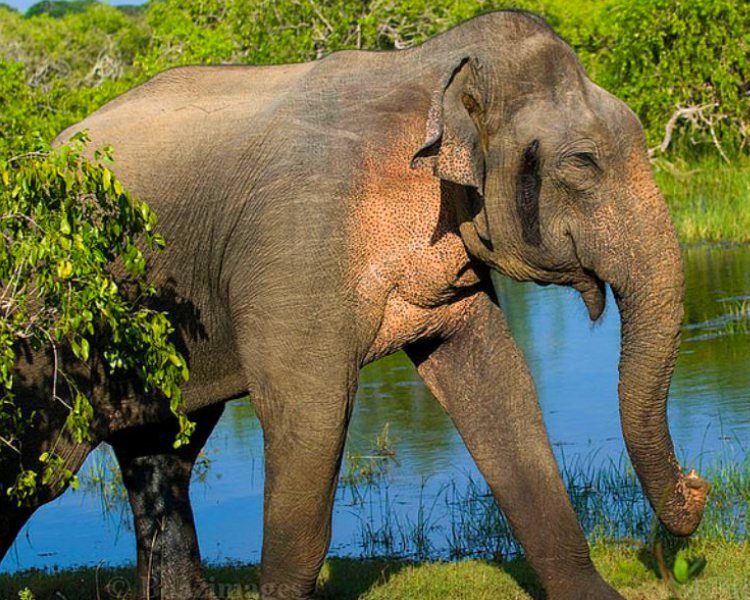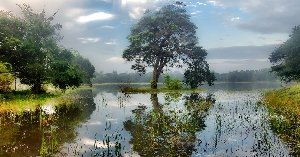Ruhunu (Yala West) National Park, or Yala as it is popularly known - is Sri Lanka’s most visited national park. It is situated 305 kilometres southeast of Colombo, 10 kilometres from Tissamaharama. Apart from being renowned for the variety of its wildlife, it has several distinctive physical features, such as extensive scrub jungle, patches of open country, and many tanks and lagoons. In addition, the park has a fine coastline on its eastern boundary with impressive dunes up to 25 metres high, broad sandy beaches and offshore coral reefs. Yala also features a number of scattered rock outcrops, some with caves.
A remarkable fact about this area is that it was once the hub of the Ruhunu civilization. A large number of important cultural ruins in the park bear testimony to this, and indicate that much of the area was populated and well-developed, especially with regards to irrigation technology. Ruhunu National Park consists of five blocks, the first of which was established in 1938. The second block was established in 1954, the third in 1967, the fourth in 1969, and the fifth in 1973. Although the park is 97,881 hectares in extent, only the 14,101 hectares of Block 1 - Yala West - are open to the public.
Entry is by vehicle only - in reality a jeep and driver hired in nearby towns such as Tissamaharama. This mode of transportation and the African-looking landscape gives the illusion of an African safari experience. The park is closed during the dry season from 01 September until 18 October when the eco-system is most vulnerable.
Flora
Yala’s vegetation mostly consists of secondary forest containing semi-arid thorn bush. Along the coast this vegetation is either stunted or prostrate. Small patches of mangrove appear along the coastal lagoons. However, this secondary forest is interspersed with pockets of fairly dense forest characterised by such species as palu, the fruits of which are prized by Sloth Bears, burutha or Satinwood, weera and maila, which is grown in temple compounds and home gardens as an ornamental tree.
Fauna
A total of 32 species of mammal have been recorded. The best time to see Elephants is between January and May. There are quite a number of Leopards, in the park, which are more usually seen reposed on a rocky outcrop. Species that are more frequently seen include the Sri Lanka Sloth Bear, Water Buffalo, Indian Wild Boar, Sri Lanka Spotted Deer, Sri Lanka Sambar, Mouse Deer, Sri Lanka Black-Naped Hare, Toque Monkey and Sri Lanka Jackal.
Avifauna
Some 125 species have been recorded. Raptors include the Crested Serpent Eagle, and White Bellied Sea Eagle. Water birds include the Lesser Flamingo and the rare Black-Necked Stork. During the north-east monsoon the lagoons are visited by thousands of migrating waterfowl such as the White Winged Black Tern and the Pintail.
Reptiles
Yala is home to a variety of reptiles, such as the Sri Lanka Swamp Crocodile, which is abundant in the abandoned tanks. The Sri Lanka Estuarine Crocodile is to be found in and near the rivers, and the Water Monitor or kabaragoya, a lizard often 2 metres in length, is found everywhere. Some of the venomous snakes present are the cobra and the Russell’s Viper.
Location MAP
Nearby Hotels




